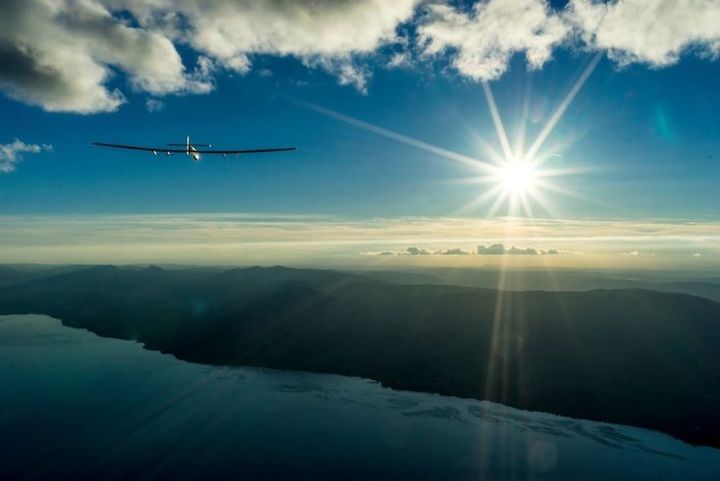
Later this year, one aviation group is planning an audacious around-the-world flight. Yes, planes routinely fly long distances -- but the trick is, it's always using fuel. Over time, the emissions from aviation build up in Earth's atmosphere and contribute to global warming. So that could be one reason to look into solar-powered planes in more detail. Yes, the Solar Impulse 2 flight plans to circumnavigate the world on the power of sunlight.
To make this possible, the plane needs to be light and efficient. That's why it's constructed of carbon fiber, a light composite. The wingspan is quite large (72 meters) and will carry a weight similar to that of a car, which shows how careful the designers have to be in terms of weight control. On board the aircraft are 17,000 solar cells that are capable of collecting sunlight all day and holding a charge for the night.
"This requires the optimization of new kinds of technology and a drastic reduction in energy consumption. Solar Impulse’s 80 engineers and technicians, under André Borschberg’s leadership, have had to apply highly innovative solutions," Solar Impulse wrote on its website.
"Whilst Solar Impulse is not the first solar aircraft project, it’s certainly the most ambitious. It is a real airborne technology lab with virtually endless endurance, capable of crossing oceans and continents by remaining in the air for several days and nights in a row."
The team didn't take this experience lightly. A dozen years of development have gone into Solar Impulse 2, and before this big flight they also built a prototype to test out the technology. Five years ago, the organization made the first solar-powered flight for 26 hours, 10 minutes and 19 seconds. Solar Impulse says that it broke three records in the meantime: maximum altitude (9,235 meters), maximum duration and gain in altitude (8,744 meters). The aircraft has made several flights since then, including across Switzerland, across the Mediterranean and across the United States.
"The chances of succeeding at the first attempt to build a solar airplane capable of flying around the world were judged to be slim, so a more rudimentary prototype, HB-SIA, was first constructed. Lessons learned from this prototype are incorporated in Solar Impulse 2, the Round-The-World Solar Airplane," the organization wrote on its website.
Flying the plane will not only be a technological challenge, but a test of human endurance. The flight is expected to last 500 hours across several legs, which means the pilot will have to spend about five to six days and nights inside the cockpit, which seats one. Not only that, but the cockpit is unheated -- requiring the pilot to get used to extreme temperatures.
This will require the pilot to train himself or herself in focus techniques, and for constant monitoring from the control center for any signs of problems. "What is really special is that it is the first and only airplane in the world which has unlimited endurance. We have an airplane which is fully sustainable in terms of energy, and our challenge now is to make the pilot sustainable as well," said Borschberg on the organization's website.
While the plane is a prototype right now, the implications for aviation are enormous. Perhaps short-term flights (at the least) in the future could be partially done by solar power. Across the thousands of flights that take place worldwide each day, this would reduce carbon emissions and make aviation more environmentally friendly. This would also be a nice ride for the passengers, who would have a whisper-quiet experience rather than the usual roar of engines.
Takeoff is coming soon! In the meantime, you can follow Solar Impulse's flight plans on its various social media channels.
Top image: Solar Impulse








